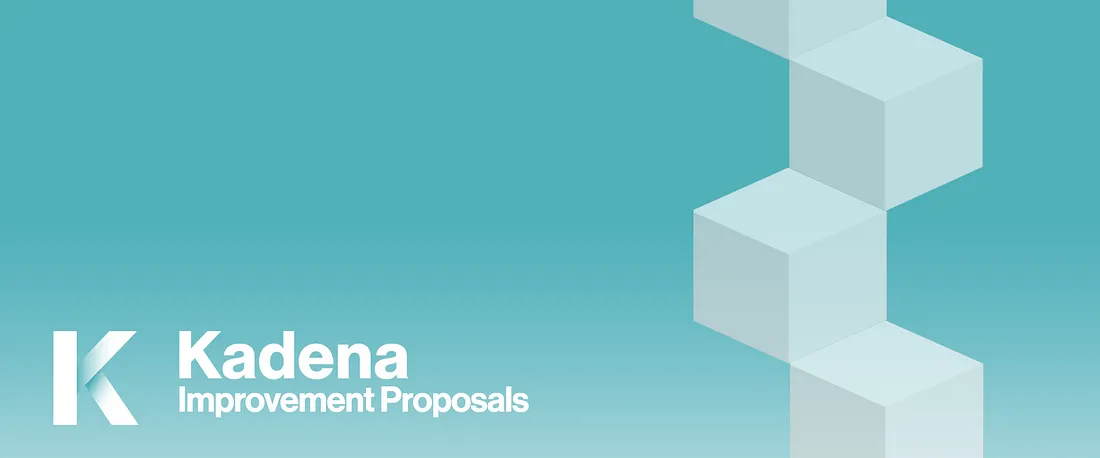Introducing KIPs: Kadena Improvement Proposals
Learn more about the process for submitting suggestions for Kadena’s public blockchain, Chainweb.
Similar to other improvement proposals that you may be familiar with from Bitcoin and Ethereum, Kadena Improvement Proposals (KIPs) allow participants to introduce new changes to the blockchain in a transparent manner.
What are KIPs? KIPs are open source requests to support technical development. They also crowdsource features for different technologies developed by Kadena. A KIP describes a potential improvement to the Kadena public blockchain (Chainweb, our Proof of Work blockchain), and the open source smart contract language Pact.
A Brief History of Improvement Proposals
We are building upon previously established processes in the developer community. The original “Bitcoin Improvement Proposal” (BIP) system drew heavy inspiration from Python’s enhancement proposals and a collection of open source principles from the Internet Engineering Task Force, “On Consensus and Humming in the IETF.” The goal of these systems is to find a way to democratically collaborate on a piece of public digital infrastructure, but also to “thoroughly vet ideas for security and feasibility, before implementing any code that could threaten the stability of the network.”
The spirit of the Internet (and public blockchain) is to be an ownerless utility. Therefore, its creators and earliest developers, despite their influence, should never solely control it. At the same time, we need a structure for collaborating and examining proposed changes for the public good. The goal is to make improvements that will hopefully benefit everyone using the network. Chainweb’s KIPs are modeled after the same principles that motivated Bitcoin and other engineering communities to set up their respective improvement proposals.
While we are using industry language, there are some small differences in our terminology for KIPs:
Kadena Improvement Proposal Life Cycle

KIP Terms Explained
Draft
A new KIP, in Pull Request (PR), or an accepted PR that is still being debated.
Deferred, Rejected or Withdrawn
Statuses that indicate a KIP has stopped for being too soon (Deferred), unacceptable (Rejected), or removed by the author (Withdrawn).
Final or Active
Final indicates KIP is at completion but not necessarily released.
Active indicates KIP does not need to be finalized (i.e. an ongoing discussion).
Replaced or Obsolete
Indicators that a previously final KIP has been superseded by a more recent KIP (Replaced) or no longer applies (Obsolete).
KIP Types
1) Standard
A “standards track” KIP indicating some kind of concrete implementation with a specification.
KIP Categories
“Category” is borrowed from EIPs and corresponds to a “Layer” in BIP. A category is only for Standard types.
• Chainweb (Soft or Hard Fork)
Core change to public blockchain consensus
• P2P/Networking
Core change to peer-to-peer or networking services
• API
API/interface layer for interoperating with Kadena’s public blockchain
• Pact
Changes to the Pact smart contract language that particularly impact a protocol
• Interfaces
Changes to, or new interfaces in, Pact for defining smart contract interoperability.
2) Process
Describes a series of actions or steps, like this KIP.
3) Informational
Guidelines, general issues or information for the community.
For more details on our KIPs process, visit our Github.
What can I do now?
View the latest KIPs. Consider introducing a KIP as you explore the Pact smart contract language and Kadena’s public blockchain testnet with these resources:
-
Getting Started: Pact Smart Contract Beginner Tutorials
-
Try Pact in your web browser.
-
Kadena Public Blockchain on Github: See the latest version of our testnet, and spin up your own node with our public binary.
-
Making a KIP: Propose a new issue on our Github KIPs page, describing the proposal in the suggested format.

